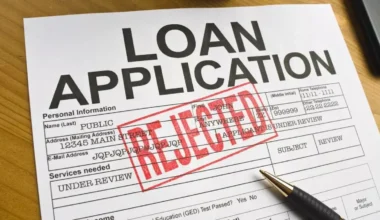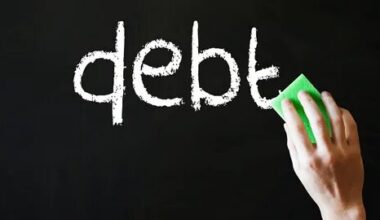Introduction: Facing the Invisible Barrier
You’re confident about your business idea. You’ve traced customer demand. You’ve built something real, even if it’s small. But when you go to ask for funding, lenders look for collateral — a car, real estate, machinery — something they can seize if things go south.
Not everyone can or wants to put up their home, their land, or precious equipment as guarantee. The thought itself causes sleepless nights.
Yet, business loans without collateral do exist — though they require a different approach. In this post, I’ll lead you step by step: what “no collateral” truly means, why lenders sometimes accept it, how to strengthen your case, routes you can take, real examples, and what to avoid. Let’s turn your vision into capital — safely.
Understanding “No Collateral” vs. What Lenders Actually Want
When lenders talk about loans “without collateral,” it doesn’t mean you’re free of all risk — it means you won’t pledge a specific asset. Instead, your credibility, cash flow, or guarantees stand in.
What does “no collateral” mean in practice?
- The loan is unsecured — you don’t pledge property, equipment, or inventory.
- However, lenders may ask for a personal guarantee or a blanket lien (claim over all business assets) to protect themselves.
- Without collateral, interest rates rise, and scrutiny is sharper.
As the U.S. Small Business Administration explains, “an unsecured business loan or line of credit is issued and supported by the owner’s creditworthiness rather than by any form of collateral.”
Lenders often try to balance risk by requiring income proof, credit history, or other commitments instead of physical assets.
Why Some Lenders Are Willing to Go Without Collateral
At first glance, it may feel risky for a lender to offer a loan without collateral. But there are valid reasons.
1. Government or agency backing
Certain government-backed programs reduce the lender’s risk by offering guarantees or insurance. In effect, the lender knows part of the loss is covered. The SBA, for example, sometimes allows loans to be made without collateral under certain thresholds.
2. Fintech / alternative underwriting models
These lenders use data analytics, real-time cash flows, sales trends, credit scores, and even nontraditional data to assess your risk. They don’t rely on appraising fixed assets. OnDeck, for instance, markets “no collateral required” unsecured business funding.
3. Shorter terms / smaller amounts
By limiting risk exposure—making shorter maturities or restricting loan size—lenders feel safer offering unsecured terms.
4. Personal guarantees / covenants
Even without collateral, lenders often require you to sign a personal guarantee or accept restrictions on business operations. This gives them recourse in default.
5. Established relationship or trust
If you’ve banked with them, repaid prior loans, or maintained a long-term relationship, a lender might feel comfortable trusting you without physical security.
Types of Business Loans You Can Get Without Collateral
Let’s explore the major categories, their trade-offs, and when they’re optimal.
| Type | Typical Size / Term | Collateral Situation | Key Trade-offs / Notes |
|---|---|---|---|
| Unsecured term loans (from banks or credit unions) | $5,000 to $150,000 (or more) | No physical collateral required | Higher interest, strict eligibility, possibly personal guarantee |
| Unsecured business lines of credit | Revolving credit lines | No asset pledge, though guarantee likely | Excellent flexibility — interest only on drawn funds |
| SBA / microloan programs | Up to ~$50,000 (or more, depending on country) | Some smaller loans are allowed without collateral | Requires documentation and personal guarantees (U.S. example) |
| Fintech / online lenders | Varies (often smaller) | Generally unsecured | Fast approvals, higher costs |
| Invoice financing / factoring | Based on outstanding invoices | No traditional collateral, just accounts receivable | You turn invoices into cash quickly |
| Merchant cash advance / revenue-based financing | Based on sales volume | No asset pledge | Repay via percentage of future revenue |
| Peer-to-peer (P2P) / marketplace lending | Varies | Typically unsecured | Matching individual investors and business needs |
From NerdWallet’s guidance: business loans without collateral can come from “online lenders, bank loans and SBA loans,” though they often come with higher interest or extra obligations.
What Lenders Look For (When They Can’t Rely on Collateral)
When you don’t have physical assets to pledge, your financial profile must shine. These are the pillars they will measure you against:
1. Strong personal & business credit
A healthy credit score (e.g. 700+ in the U.S. model) shows you’ve handled debt well. Many lenders require both your personal and business credit histories to be solid. Bank of America stipulates a 700+ FICO score, two years in business, and $100,000 in annual revenue for its unsecured product.
2. Consistent revenue & profitability
Lenders like to see stable or improving top-line performance. If your revenue fluctuates wildly, it’s riskier.
3. Cash flow & coverage ratios
Your projected cash flow must comfortably cover loan payments. The stronger your debt service coverage, the more confident the lender is.
4. Low current debt burden
If your business or you personally are already deeply in debt, that’s a red flag.
5. Business plan & growth narrative
A coherent plan with realistic forecasts shows you’re thoughtful and deliberate — this narrative often bridges gaps in numbers.
6. Personal guarantee, legal documents & structure
You may be asked to personally guarantee the loan, sign lean covenants (e.g., no further debt without permission), or accept UCC lien coverage.
7. Partial or alternative security
Even small pledges (inventory, receivables, equipment) or escrow deposits can increase your acceptance odds.
8. Strong banking or lender relationship
Having prior history with your bank or trusted local financial institutions can help in your favor.
Step-by-Step: How to Structure Your No-Collateral Loan Application
Here’s a roadmap to apply with confidence.
Step 1: Self-assessment & preparation
- Pull your credit reports (personal and business).
- Prepare financial statements (last 2–3 years, if available).
- Gather bank statements, tax returns, cash flow forecasts.
- Develop or update your business plan, highlighting revenue sources, margins, and growth.
Step 2: Identify suitable lenders and programs
- Approach banks or credit unions offering unsecured products (e.g. PNC offers $10,000–$100,000 unsecured small business loans).
- Explore SBA (or local government) programs that allow unsecured lending under certain thresholds.
- Research online lenders such as OnDeck, which specialize in no-collateral financing.
- Check business lines of credit (e.g. Wells Fargo provides unsecured lines from $10,000 to $150,000).
Step 3: Screen eligibility & match offers
Don’t waste time applying where you clearly don’t meet minimums. Focus on lenders whose criteria you satisfy (credit threshold, revenue floor, time in business).
Step 4: Craft your application pitch
- Be transparent about your “no collateral” situation.
- Emphasize strengths: strong cash flow, clean financials, reliable client base.
- Provide projections showing your ability to repay.
- Include supporting documentation (bank statements, contracts, letters of credit, etc.).
Step 5: Submit and follow up
Fill out lender forms carefully and completely. If there’s a comments section, underscore your repayment plan. Be ready to answer supplementary questions.
Step 6: Negotiate and review terms
If approved, analyze interest rates, fees, personal guarantee clauses, repayment windows, prepayment penalties. Negotiate where possible.
Step 7: Use funds wisely & build your credit history
Deploy funds for revenue-generating or cash-flow–improving uses (not speculative gambles). Pay reliably and early when possible, to build credibility for your next round.
Illustration: Comparing Two No-Collateral Loan Offers
Suppose you (in a locale similar to the U.S. environment) have two possible lenders. Here’s how to compare them:
| Feature | Lender A | Lender B |
|---|---|---|
| Loan amount | $50,000 | $40,000 |
| Term | 36 months | 24 months |
| Interest rate (APR) | 11% fixed | 13% fixed |
| Fees / origination | 2% upfront | 1.5% upfront + monthly admin |
| Collateral required | None, but personal guarantee | None, guarantee + blanket lien |
| Approval time | 7 days | 3 business days |
| Prepayment penalty | None | 1% if paid early |
| Total interest over life | ~$8,795 | ~$6,888 |
You’d compute the total cost (interest + fees) and compare to your projected revenue growth and cash flow to see how much burden you can bear. Also, check how steep the personal guarantee / lien terms are.
Advantages and Risks Weighing Them Wisely
Benefits of no-collateral loans
- You preserve ownership of your assets and don’t risk them directly.
- Faster approval cycles (no need for collateral valuation).
- More accessible to newer or leaner businesses without hard assets.
- Flexibility to grow unburdened — you’re not locked by asset constraints.
Drawbacks and dangers
- Higher interest rates and fees — lenders offset extra risk. According to Bankrate, unsecured loans tend to cost more.
- More rigorous vetting and tougher approval standards.
- Personal guarantee exposure — if your business fails, your personal assets may be at risk.
- Shorter terms, smaller amounts — you may not get as much as you hoped.
- Overly aggressive or dishonest lenders may hide fees or impose draconian covenants — read every line.
Real Lender Examples in Action
To make this more concrete, here are several companies or programs known to offer business financing without requiring collateral (or with relaxed collateral policies).
- PNC’s Unsecured Small Business Loan
Offers $10,000 to $100,000 with no collateral required. - Truist Simple Business Loan
Up to $50,000 with no collateral required and simplified documentation in certain cases. - Bank of America Business Advantage Term Loan (Unsecured)
Requires credit ≥ 700, business ≥ 2 years, and $100,000 revenue, but does not require asset collateral. - Wells Fargo Unsecured Business Line / Loan
Offers unsecured credit from $10,000 to $150,000. - OnDeck
A fintech lender that allows unsecured funding, making decisions based on cash flow and credit rather than asset pledge. - Midland States Bank
Markets unsecured business loans up to large amounts (e.g. $250,000+) with no collateral required.
These show that even traditional players sometimes stretch to offer unsecured terms — but only when a borrower’s profile is strong.
Alternative (Non-Traditional) Strategies When Loans Aren’t Viable
If a straight no-collateral business loan isn’t an option, you still have creative paths to get funding without pledging your property:
1. Invoice factoring / receivables financing
You sell your accounts receivable to a factoring company and receive cash up front. The factoring company collects from your customers.
Because you’re selling the receivables themselves, collateral is less relevant.
2. Revenue-based financing / merchant cash advances
You receive a cash advance in return for paying back through a fixed percentage of your future sales. No asset pledge, but cost can be very steep.
3. Crowdfunding / equity crowdfunding / peer investment
Raise money from supporters, customers, or small investors — no loan, no collateral — but you share your vision and often equity or rewards.
4. Grants, subsidies, guarantee programs
Many governments or NGOs back small businesses with grants or guarantee schemes that underwrite part of the risk. You don’t pledge assets, though eligibility can be strict.
5. Bootstrapping / internal savings
Grow gradually from profits, reinvest, cut overhead, and avoid external debt until your business is stronger.
6. Strategic partnerships / investor capital
Bring in a partner or angel investor who supplies capital in exchange for equity stake or profit share — this isn’t a loan, so collateral isn’t relevant.
Common Mistakes & Red Flags to Watch Out For
As you navigate this path, avoid these pitfalls:
- Agreeing to excessive hidden fees or high origination costs
- Accepting predatory interest rates
- Signing sweeping personal guarantees without limits
- Borrowing more than your cash flow can service
- Using the loan for speculative expansion instead of operations
- Failing to read the fine print about covenants, penalties, or defaults
- Not shopping around — jumping at the first offer
Always run the numbers, simulate worst-case cash flow stress, and, if possible, consult a financial advisor or small-business support service.
The Global / Local View (Optional Customization)
If you operate outside the U.S. (e.g. in Nigeria, Kenya, or elsewhere), the same principles apply — though lenders, regulations, and credit infrastructures differ.
- Local governments or development banks may provide guarantee funds that reduce or waive collateral requirements.
- Mobile-money and digital credit scoring (as used by fintech firms in Africa) can substitute for traditional credit histories.
- Microfinance institutions sometimes offer small no-collateral loans at community or interest-subsidized rates.
- Peer networks, cooperatives, or trade associations might pool collateral or guarantees.
If you tell me your country, I can map specific lenders and programs for your region.
Conclusion: Turning Vision Into Funding (Safely)
Getting a business loan without collateral is tougher than using assets as security — but it’s not a myth. It requires a rock-solid financial profile, clarity of purpose, smart negotiation, and sometimes willingness to put your credibility (via guarantees) on the line.
If you:
- Build and polish your financials
- Choose the right lender or program
- Tell a credible, believable story backed by data
- Read every clause and negotiate terms
- Use borrowed funds prudently
… you stand a genuine chance of unlocking capital without losing your property.







